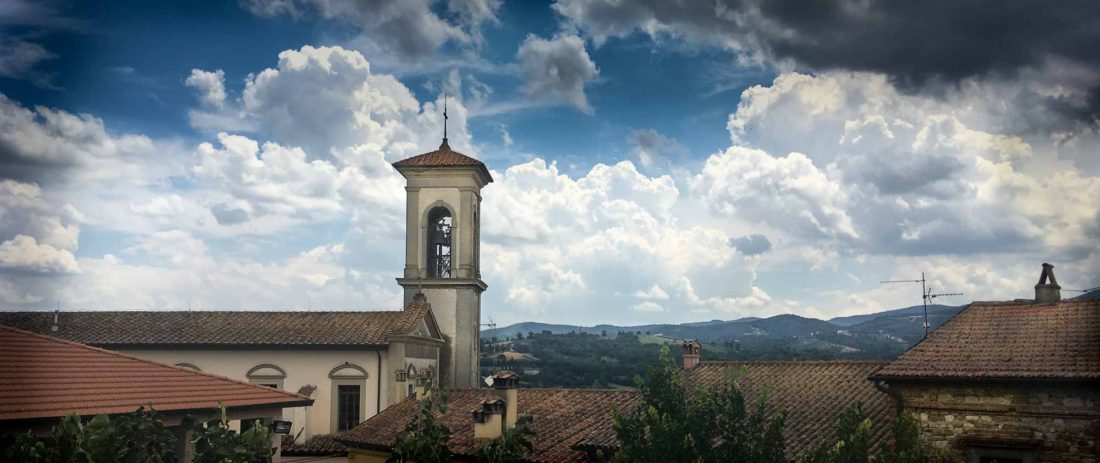
The pasta we can’t quit (and recipe)
When I want a mini-vacation—and lunch—I head to the sleepy Tuscan hilltop village of Monterchi. In the piazza at the top is one of my favorite family restaurants, Ristorante Al Travato.
It’s only open from-kinda-around-Easter to kinda-around-the-end of October, depending on the weather and the back health of Laura. The family first opens the restaurant on weekends only, then slowly builds, with the heat, to being open most days in summer, and then winds it all back down in the fall. What they do all winter I am not sure, although they’ve hinted it involves skiing.
Marco, Laura’s husband, finds the wines for the cellar—a cave that goes back into the medieval walls—and Laura cooks. Two of their teenage daughters serve (yep, beauties. We can even get our 14-year-old son to eat there whenever we want), while the youngest daughter rides around the square on her small, enviable pink bike.
Our family craves one dish in particular, at least once a week— Spaghetti Aglio, Olio e Pepperoncini—true Tuscan soul food. It’s spaghetti that’s properly al dente, loads of garlic, and a few really hot peppers, all swimming in olive oil.
While it’s simple in its ingredient list, differing opinions of how it should be made abound. You could say of Laura’s (off-menu version): “questo spacca di brutto” (“this chops off the ugly”—I know, the translation doesn’t help me either, but the kids say it means something is a big deal). Best of all for anyone who wants to bring a bit of Italian soul food into their kitchen, it’s easy enough to do tonight with ingredients you probably already have on hand.
Here’s a two-minute video on how Laura makes the definitive Tuscan comfort food.
A cooking note: you’re going to save some of the water from cooking the pasta when you drain off the rest. Also—do this before the pasta has reached the “al dente” (still slightly firm when bitten) state. It will finish cooking when added to the pan with the other ingredients (while the last bit of cooking water helps their flavors go inside the noodles).






No Comments